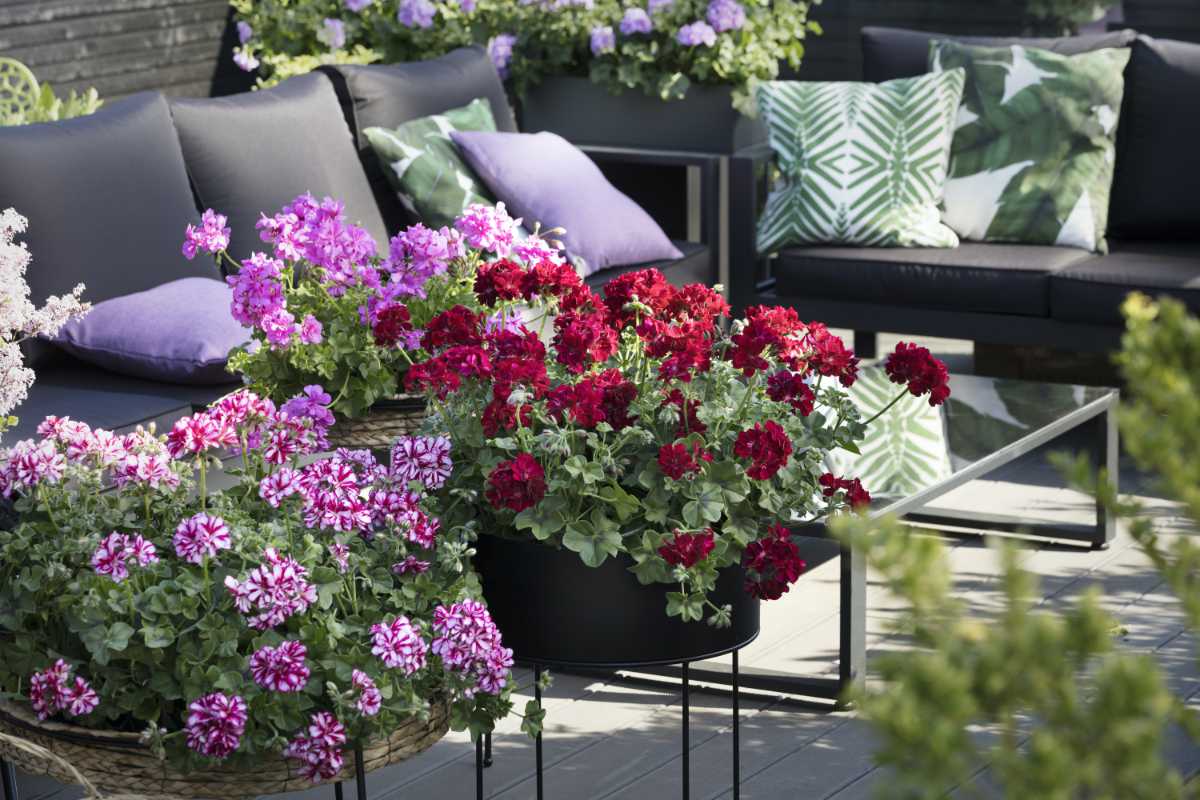Are you looking for low-maintenance, high impact colour this summer with patio pots, beds and borders? For quick-fix glorious garden style, look no further than the pelargonium, which needs so little watering and should thrive in a sunny spot through summer and into autumn. A staggering 40 million are planted in UK gardens each year.
Pelargoniums are not geraniums
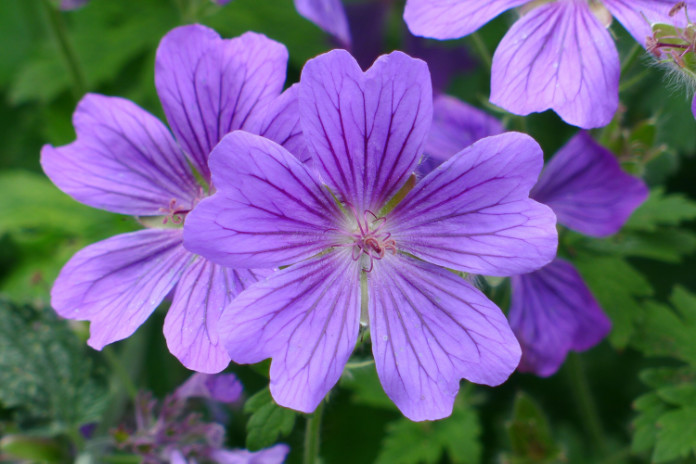
Pelargoniums are commonly known as geraniums, but this is wrong as true geraniums are hardy, herbaceous plants which are often used as fillers in borders come June, when the perennial cranesbill geraniums act as terrific ground cover and provide great colour too.
The naming problem occurred in the 17th century when the first pelargoniums were brought to Europe and were called geraniums, due to their similarity to the perennial plant, and so the name geranium stuck.
Pelargoniums store water in their stems, which makes them highly versatile when it comes to planting, so be creative – disused drain pipes, chimney pots, even a wellington boot or two – these garden troopers will thrive.
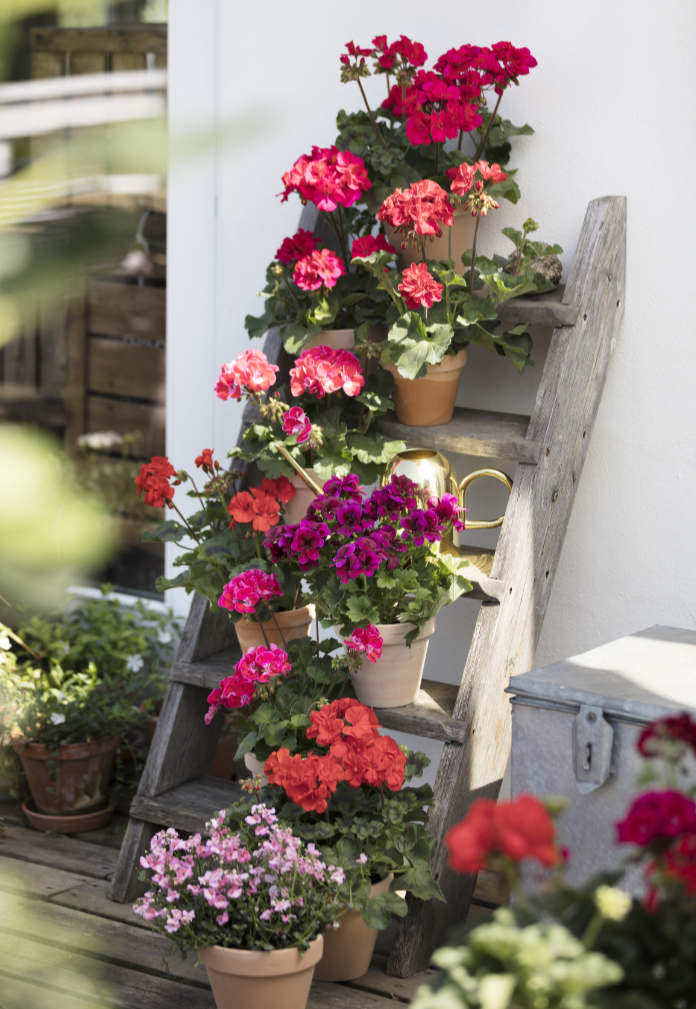
Planting pelargoniums into containers is among the quickest and most rewarding ways to fill a terrace, balcony or garden with vibrant colour, transforming even the plainest outside space into a feel-good oasis with a Mediterranean vibe.
Award-winning garden designer Claudia de Yong says: “To create a low maintenance garden without compromising on colour and visual interest, look for plants like pelargoniums that can be grown with minimal aftercare, and still remain healthy and happy throughout the summer.”
How to grow pelargoniums
Claudia offers the following tips for how best to plant and grow pelargoniums.
Combine varieties
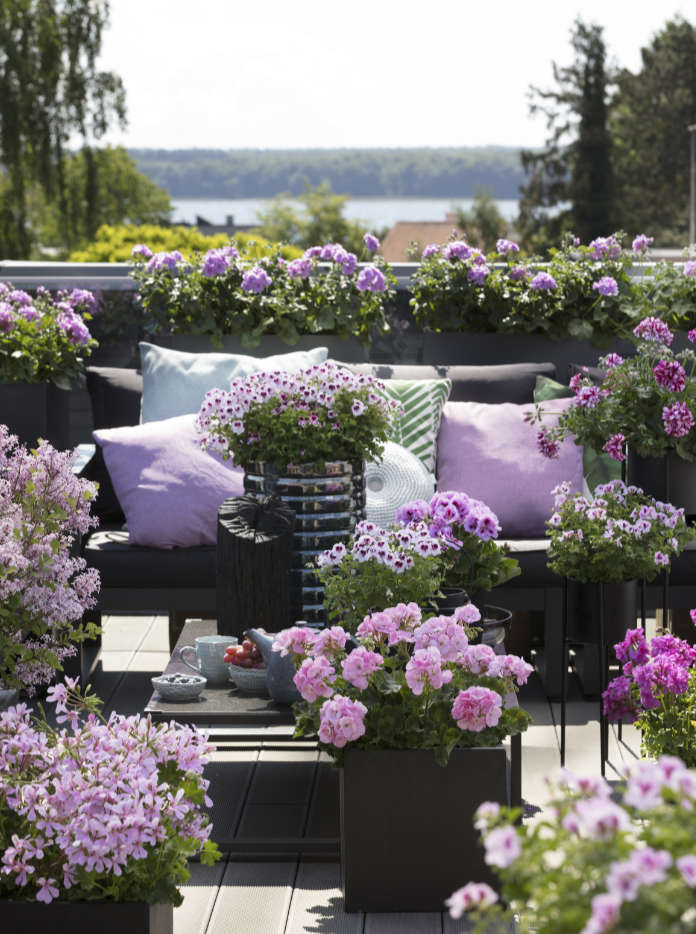
There are more than 500 varieties, from scented-leaf to trailing ivy specimens along with upright bushy regals. Combining different varieties together creates a beautiful, eye-catching range of colours and growth habits – even the foliage variations can be stunning.
Use block colour
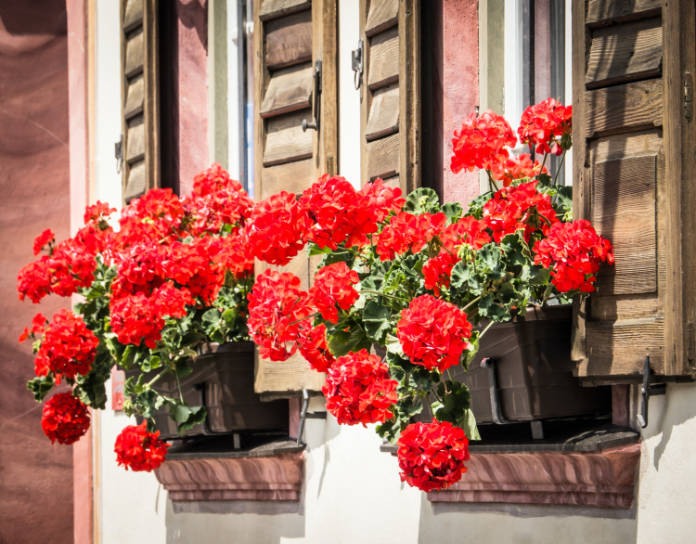
Choose a single colour theme and colour-block your pelargoniums to create a strong statement.
Include them in borders
Pelargoniums aren’t just for pots and planters, they also grow beautifully in herbacious borders – combine with Nepeta (Catmint), Erigeron (Mexican fleabane), Erysimum ‘Bowles Mauve’ (Wallflower) or Salvia Caradonna (Balkan Clary) for bee-loving visual interest.
Go vertical

Create a vertical ‘garden’ of pelargoniums by affixing pots to walls, fences or balconies – an effective way to create privacy.
Take them indoors
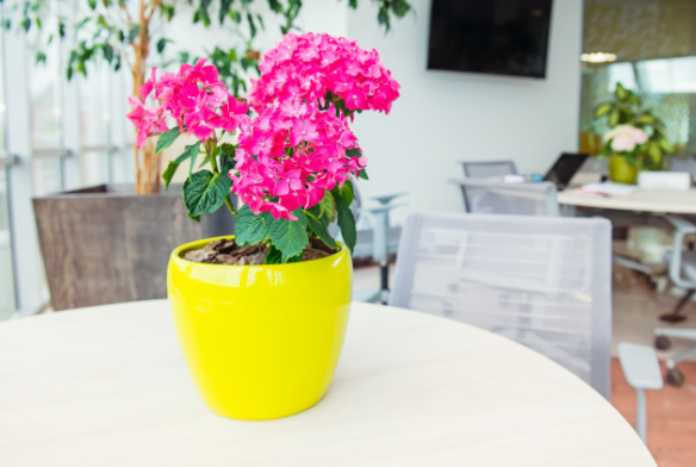
Pelargoniums love being in a sunny spot indoors too – planting single varieties in simple terracotta pots for the kitchen table or work surface brings summer inside. Alternatively, use them as cut flowers – pelargoniums will last for up to three weeks in a vase.























































